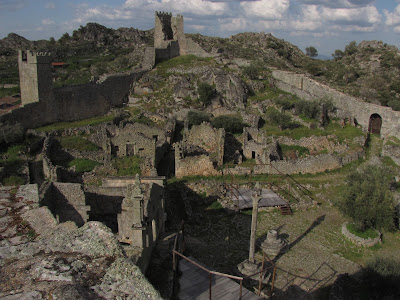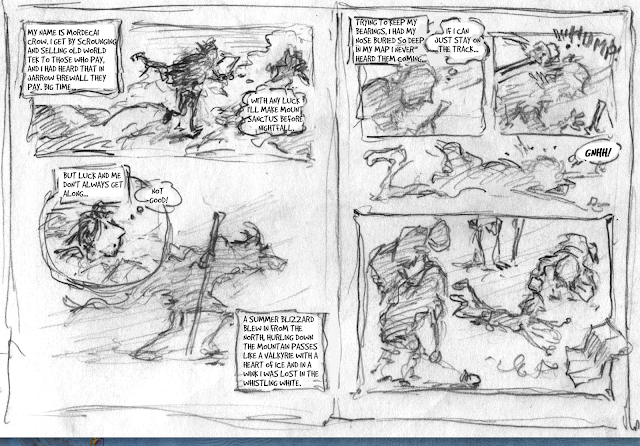It’s no secret. I have a love of ruins. It gives my beloved a lot to worry about, as I tend to like things best when they are about to fall down. It doesn’t make me the most reliable home owner...
But in watching the tragedy of modern urban warfare play out in Gaza these days, I constantly find myself appalled yet fascinated by how the inhabitants continue to survive in the wreckage of a modern metropolis. It’s an old story, yet at the same time one we are seeing played out on an industrial scale in our own time. Aleppo in Syria, one of the oldest inhabited cities on Earth, also wasted by war. Antakaya in Turkey, once the ancient city of Antioch, tumbled down by a massive earthquake. It is hard to imagine any of these cities becoming anything but ghost cities, abandoned ruins that people once called home.
On our travels my partner and I often hunt down long abandoned sites where people once lived and thrived. It’s a bit of a hobby. Throughout Europe there are a myriad of hill towns that the inhabitants simply walked away from when it became safe enough and more practical to live in the vast industrial cities being built on lower ground, by the rivers and streams needed to transport goods and drive the mills. We have visited dozens of castle ruins that became redundant with the advent of gun powder and the massive remains of a number of religious houses in Ireland, pulled down by a despotic king looking to destroy their authority and get his hands on their riches.
Marialva in eastern Portugal, an abandoned medieval hill town where ghosts walk the streets.
Somehow I find it very poignant to wander the rubble-filled, weed-choked streets and spaces of these abandoned places. There’s a bitter sweet feeling in thinking about the people that lived there, how they probably thought, like we do, that life there would never change, could not imagine how the world could turn and they would be thrust out, or simply walk away.
In Mordecai Crow, where I am drawing a collapsed world, I constantly revisit some of these places we have seen for my inspiration. In my third volume I wanted to use one such site, a place that has stayed lodged in my imagination for decades now because of its otherworldly location and bizarre history.
Years ago, in 1990 we were in Coimbra, Portugal, and sought out an ancient medieval monastic church, Santa-Clara-a-Velha, abandoned to the rising sands and waters of the Mondego. The inhabitants had eventually left it and its attached buildings, moving their monastery to higher ground, but the church still stood, crumbling but standing in waters that filled it to near the top of the side aisles. My memory was that there was a rickety walkway that spanned hummocks of earth so that you could make it out to the building, entering through a gaping window and looking down through the water to the floor of the church ten feet below the surface, where fish swam around the pillars.
.jpg) |
| The church as it appeared in 1954 (and still when we visited it in 1990). Photo by Mário Tavares Chicó |
 |
| Santa Clara as it was during our visit in 1990, still flooded. |
The church, left empty since 1677 has a connection to one of the eeriest and personally one of my favourite stories of medieval Portugal. It had been the original resting place of Inês de Castro, a Galician noblewoman and beloved of Prince Pedro, the future king of Portugal, who fell in love with her, neglecting his own recent bride, Constance of Castille. Constance died at an early age and Pedro fought to have Inês proclaimed his bride. However, this union threatened the stability of the realm and Pedro's father, Alfonso IV, conspired to have her murdered. This happened in the monastery of Santa-Clara-a-Velha where the poor woman's body was then interred, but on rising to the throne, more than a decade later, the legend has it that now King Pedro I had her body exhumed and brought to Alcobaça to lie there next to his own tomb in state (their tombs are still there side by side in this beautiful old Romanesque church). Before her interment, however, he summoned his nobles and had them do homage to her corpse, setting her on the throne and having them approach, one by one, and kiss the hem of her gown. In a country rife with the religious macabre, it just doesn’t get better than that!
 |
| I'm sure you can only imagine how excited we were when we came across this painting in the Musée des Beaux-Arts in Lyon of Le Couronnement d-Ines de Castro en 1361 by Pierre Charles Comte. |
Below is my inked page where I have borrowed Santa-Clara-a-Velha and placed her in my own story. As always, it was a real pleasure to revisit this church through my art. Today the waters of the Mondego have been pushed back and it is an easily accessible monument, still unused but high and dry and well cared for. If you are curious, you can see the monastery as it appears today at this site: https://sacredwanderings.com/monastery-of-santa-clara-a-velha-coimbra/
It will not now fall down anytime soon but, to my eyes, in salvaging it and pushing back the waters it has, sadly, lost most of its charm.
 |
| Santa Clara re-purposed for my own story... |
Nice review!
I had a nice review of Secrets of Jarrow in Canadian Review of Materials this month.
You can read the entire review here: https://www.cmreviews.ca/node/3824





























.jpg)





